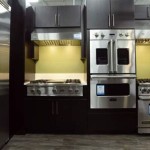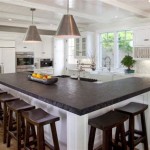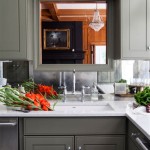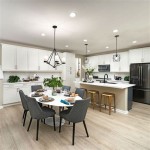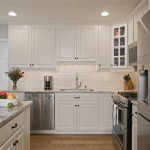LED Can Lights for Kitchen
LED can lights, also known as recessed lighting or downlights, have become increasingly popular for kitchen lighting due to their energy efficiency, versatility, and long lifespan. These lights are installed into the ceiling, providing ambient or task lighting depending on their placement and beam angle. Here's a comprehensive guide to LED can lights for your kitchen:
Benefits of LED Can Lights
- Energy Efficiency: LED can lights consume significantly less energy than traditional incandescent or halogen bulbs, resulting in lower electricity bills.
- Long Lifespan: LED lights have an exceptionally long lifespan, typically lasting over 50,000 hours. This means you won't have to replace them for many years, saving you time and money.
- Versatility: LED can lights are available in various sizes, shapes, and beam angles, making them suitable for different kitchen layouts and lighting needs.
- Dimmability: Many LED can lights are dimmable, allowing you to adjust the brightness to create the desired ambiance.
Factors to Consider When Choosing LED Can Lights
- Size: Can lights come in various diameters, typically ranging from 4 inches to 6 inches. Choose the size that best fits the scale of your kitchen and the desired light output.
- Shape: Round and square can lights are the most common, but there are also specialty shapes available, such as rectangular or gimbal (adjustable).
- Beam Angle: The beam angle determines the spread of light. Narrow beam angles (10-30 degrees) provide focused task lighting, while wide beam angles (60-90 degrees) offer more general ambient lighting.
- Color Temperature: Choose the color temperature that creates the desired ambiance in your kitchen. Warm white (2700K-3000K) provides a cozy atmosphere, while cool white (4000K-5000K) is more energizing and suitable for task lighting.
- Dimmability: If you want the flexibility to adjust the brightness, choose dimmable LED can lights.
- General Lighting: Space can lights evenly across the ceiling to provide ambient lighting throughout the kitchen.
- Task Lighting: Place can lights directly above work areas, such as the sink, counter, or stovetop, to provide focused illumination.
- Accent Lighting: Use can lights with narrow beam angles to highlight specific features or artwork in your kitchen.
- Spacing: The optimal spacing between can lights depends on the desired light output. As a general rule, place them no more than 6 feet apart.
- Cutting Holes: Use a hole saw or a template to cut precise holes in the ceiling drywall for the can lights.
- Wiring: Connect the electrical wires from the can lights to the appropriate circuit.
- Mounting: Insert the can lights into the holes and secure them using the provided mounting brackets.
Placement and Planning
The placement of LED can lights is crucial for achieving optimal lighting in your kitchen. Here are some guidelines:
Installation and Maintenance
Installing LED can lights requires electrical knowledge and experience. It's recommended to hire a licensed electrician for proper installation:
Once installed, LED can lights require minimal maintenance. However, it's a good idea to inspect them occasionally for any loose connections or other issues.

Commercial Electric 4 In White Low Glare Integrated Led Recessed Light Trim 625 Lumens 3000k Soft Kitchen Bedroom Office 53196102 The Home

5 Reasons To Use Recessed Led Ceiling Lights E Green Electrical

Pyramid Home Decor 6 In Round Color Selectable 5cct New Construction Or Remodel Ic Rated Canless Integrated Led Recessed Light Kit White Phd L003 The

Brightest Recessed Lighting For Kitchen Cleverly Inspired

Choosing The Best Led Recessed Lighting What You Should Know Blog

Lepro 12 Pack 6 Inch Dimmable Led Retrofit Downlight 12w 1050lm 5000k Daylight Recessed Lighting

Torchstar 4 Aluminum Etl Certified Dimmable Recessed Lighting 8 Count

Led Recessed Lighting Premier

How To Replace Recessed Lighting With Led The Home

Why Are My Led Pot Lights Flickering Mr Light



